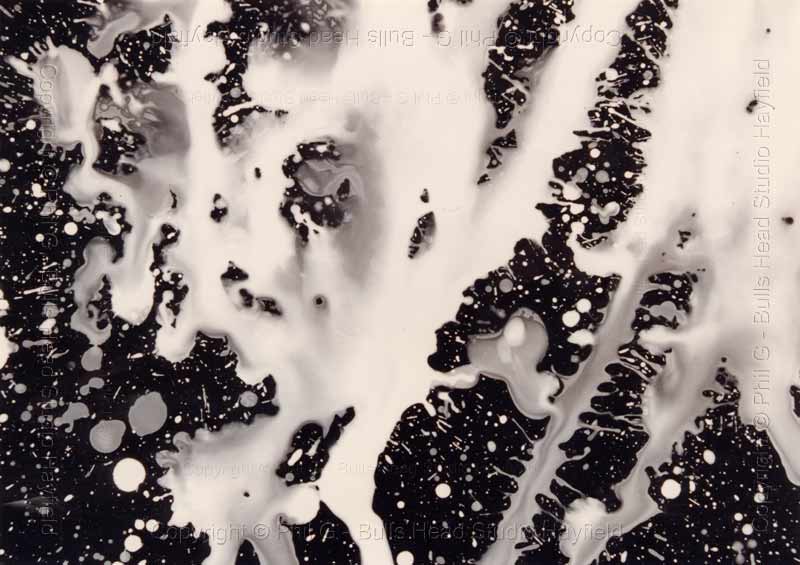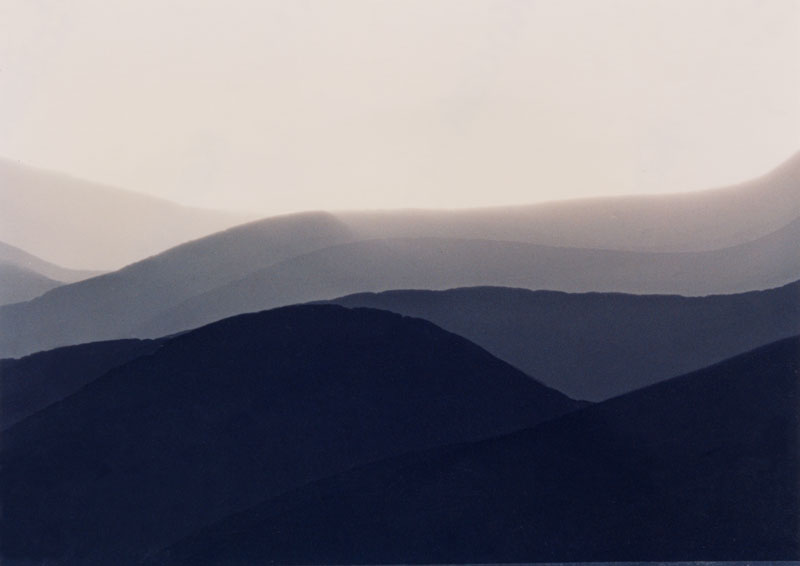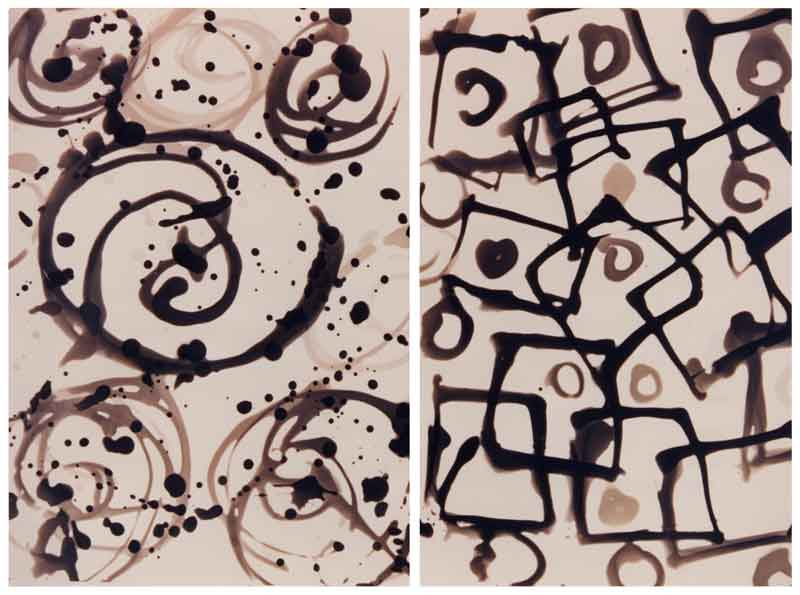Chemigrams
The production of tonal values on photographic paper by the creative application of chemicals and exposure to light.
No special equipment is required and the process can be performed in daylight conditions using out of date and fogged paper not suitable for conventional printing.
The techniques can also be applied to conventionally exposed photographic prints to a achieve selective development and to give an additional opportunity for creativity.
Works on the principles that :
1. Developer turns light sensitive crystals that have been exposed to light Black or Grey depending upon how much light and /or how long developer remains in contact with the emulsion,
2. Fix removes those light sensitive crystals that have not been acted upon by the developer from the emulsion leaving the paper White of a tone of grey.
Ref notes 'Photographic Paper Structure and Process'
Note as Developer works in a Alkali solution, Stop and Fix are Acid and will stop the developer from working if they are allowed to contaminate the developer solution . However some interesting effects can be achieved by the mixing of developer and fix on the surface of the paper.
Methods of application
Care must be taken to protect skin, eyes and clothing from splashes you should refer to Safety data sheets and follow your H&S guidelines.
Brushing - paint brushes fie and course bristle Dripping - brush of bulb pipett |
 |
| Splatter/spray - bristle brush and plastic rule or garden hand spray | 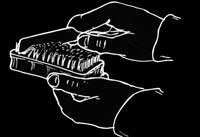 |
Dipping - various parts of the print into chemicals Printing - pressing an object/s soaked in chemicals onto the surface of the paper |
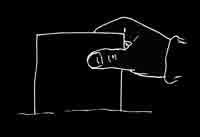 |
Fix applied to paper then Developer -
